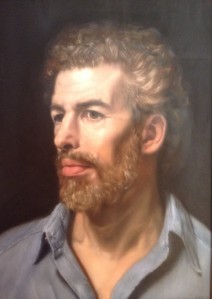Born to do Math 69 – Change in Mind
Scott Douglas Jacobsen & Rick Rosner
July 22, 2017
[Beginning of recorded material]
Scott Douglas Jacobsen:
It is social reinforcement. It is not just that these physical characteristics
are dramatically influenced by genetics. It is also that it is shaping our
minds as well. So, our evaluative structures for what is attractive change over
time in proportion to that physical structure change in our minds.
Rick Rosner: There
are levels of explanation that are more useful or convenient depending on what
you’re doing with the thing you’re analyzing and your explanations – if you’re
writing a spec. sitcom script—your operative explanations are going to be
different than if you’re doing a study on the neurochemistry of love.
Unless, you’re a great writer and can get jokes out of
neurochemistry. With regards to IC and information cosmology, the most applicable
set of explanations, if it is true, in one area that I’ll risk saying that it
has a possibility of being true is whether the universe is entropic or not.
The Second law of Thermodynamics is the one that everyone
talks about. It is the interesting one to the point that it is not interesting
to talk about at all. It says in a closed system only disorder can increase.
So, the energy you expend cleaning a messy room is greater – the heat you
generate is a greater force of disorder at a thermodynamic level – than the
energy you spent stacking up your crap.
You cannot win. You cannot ever increase the order of a
closed system. That seems like the dominant idea of order in the universe. I’d
say for most of the 20th century. Where you have local outbreaks of
order on Earth, where order and complexity increase, maybe throughout the
universe, but the models of the universe have it winding down one way or
another back into complete disorder and chaos, or just a complete lack of
useable energy by the end of time.
Authors[1]

Rick Rosner
American Television Writer
RickRosner@Hotmail.Com
Rick Rosner

Scott Douglas Jacobsen
Editor-in-Chief, In-Sight Publishing
Scott.D.Jacobsen@Gmail.Com
In-Sight Publishing
Endnotes
[1] Four format points for the session article:- Bold text following “Scott Douglas Jacobsen:” or “Jacobsen:” is Scott Douglas Jacobsen & non-bold text following “Rick Rosner:” or “Rosner:” is Rick Rosner.
- Session article conducted, transcribed, edited, formatted, and published by Scott.
- Footnotes & in-text citations in the interview & references after the interview.
- This session article has been edited for clarity and readability.
- American Psychological Association. (2010). Citation Guide: APA. Retrieved from http://www.lib.sfu.ca/system/files/28281/APA6CitationGuideSFUv3.pdf.
- Humble, A. (n.d.). Guide to Transcribing. Retrieved from http://www.msvu.ca/site/media/msvu/Transcription%20Guide.pdf.
License
In-Sight Publishing and In-Sight: Independent Interview-Based Journal by Scott Douglas Jacobsen is licensed under a Creative Commons Attribution-NonCommercial-NoDerivatives 4.0 International License.
Based on a work at www.in-sightjournal.com and www.rickrosner.org.
Copyright
© Scott Douglas Jacobsen, Rick Rosner, and In-Sight Publishing and In-Sight: Independent Interview-Based Journal 2012-2017. Unauthorized use and/or duplication of this material without express and written permission from this site’s author and/or owner is strictly prohibited. Excerpts and links may be used, provided that full and clear credit is given to Scott Douglas Jacobsen, Rick Rosner, and In-Sight Publishing and In-Sight: Independent Interview-Based Journal with appropriate and specific direction to the original content.
No comments:
Post a Comment